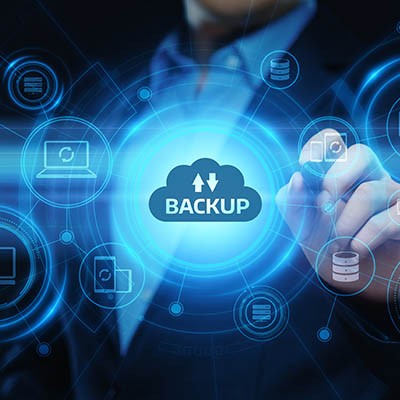No business ever wants to suffer a data loss disaster, but that doesn’t mean that it’s not coming for you at some point during your operations. You have to be careful and take calculated steps to minimize the impact of such an incident. In particular, you want to avoid losing these three types of data, for it could make recovery all but impossible if you don’t.
BSGTech Blog
Data backup may not be at the forefront of your business’ technology list, but it needs to be a consideration. Like much of the technology we use for our businesses, backup is going through a lot of positive innovations at the moment. Let’s take a look at five things that are going to change the look of enterprise data redundancy.
Where there’s business, there’s the opportunity for losses. Even if you have your operations locked down, circumstances will always arise far beyond your control. We’re talking about the big ones, the devastating data loss incidents that grind your business to a halt and threaten its future. You can take action now to prevent these types of disasters from happening.
Considering how much can go wrong with your business, you must have a plan of action just in case things go awry. A managed IT provider can certainly help with the business technology side of things, but other factors affect how a business recovers from disaster. Let’s consider the many facets of a business continuity plan and how you can improve your own.
If you want your business to succeed, you’ll need to make sure you have a data backup solution in place. Additionally, this data backup solution needs to have two specific metrics nailed down: recovery point objective (RPO) and recovery time objective (RTO). Let’s discuss what these metrics mean and why they are so important for data recovery.
When you think of innovation, data backup isn’t always at the top of the list of subjects that come up. As the demand for data security and redundancy grows, however, we are beginning to see some interesting innovative features being added to data backup. Let’s take a look at three interesting new features future data backup systems will include.
Your business relies on data to function, and losing this information could be a death sentence for your business without a data backup in place. Today, we want to explore why data backup is such an effective and important part of a business continuity plan, as well as how you can ensure that you are implementing the most important practices in regard to data backup.
The future presents countless interesting and daunting challenges, one of which you might not necessarily expect: data preservation. Is today’s data storage up to the task of preserving information for the decades and centuries to come? Today we explore this interesting concept and some of the options businesses have at their disposal, at least for the foreseeable future.
Bear with me while I get a little nerdy here, but I recently finished the sci-fi novel series Remembrance of Earth’s Past by Liu Cixin. It’s also known as the Three-Body Problem series, and while I don’t want to spoil anything, the series is full of very interesting problems that future humans run into as they try to ensure their longevity in an apparently dangerous universe. One of these problems that got my IT brain spinning was archiving data that could potentially outlive humankind itself. It highlights just how fragile and temporary our modern data storage is, and it’s worth examining, because more and more of our things are built upon modern data storage, whether we realize it or not.
If you are a frequent reader of this blog, you know that we rev the throttle on data backup a lot. This is because it can quite literally save your business and for something that valuable, it doesn’t come with a lot of cost. Unfortunately, a lot of businesses don’t always find the expense worth it. In the minds of many decision-makers, what are the chances that your business is hit with a situation that would necessitate a full system restore?
There are many moving parts of a functional and successful business, all of which depend on access to its data. If you’re not prepared for a worst-case scenario in which your data gets wiped out, you’ll be in dire straits with no opportunities for recovery. If you take proactive action now, you can prevent a data loss incident from sinking your business.
Ransomware attacks are notorious for their expense to the victim—largely because of the various costs that come along with successful ransomware infections, including many that might not be expected at first. Let’s review some of these costs, if only to reinforce the importance of avoiding ransomware as a rule.
Your business’ data is its lifeblood, which means that one of your internal priorities should be protecting it. While we often discuss the importance of your cybersecurity to defend against data theft and similar issues, it is also important to consider what would happen if the data loss was caused due to damage to the infrastructure it was stored on.
We are used to hearing “redundant” used as a non-complimentary term, so it can be off-putting to hear how you want to make sure that your backups are redundant in case of a disaster. With March 31st being World Backup Day we want to talk about how important redundancy is important, especially in the midst of a considerable disaster event like the one we are doing today.
Data backup is a topic that we are always willing to discuss, and if you follow this blog at all, that will likely become very apparent. Now, some of the readers of this blog will have a data backup and recovery strategy in place, and you aren’t the ones we want to speak to. Instead, we want to talk to the people who don’t have one, the ones who need to fix that.
Plan: NOUN
1. A detailed proposal for doing or achieving something.
We’ve all heard or maybe even used the expression “That didn’t go as planned”. More often than not, a well-designed and implemented disaster recovery goes as planned, but do you really want to wager your entire business without doing any sort of testing?




















